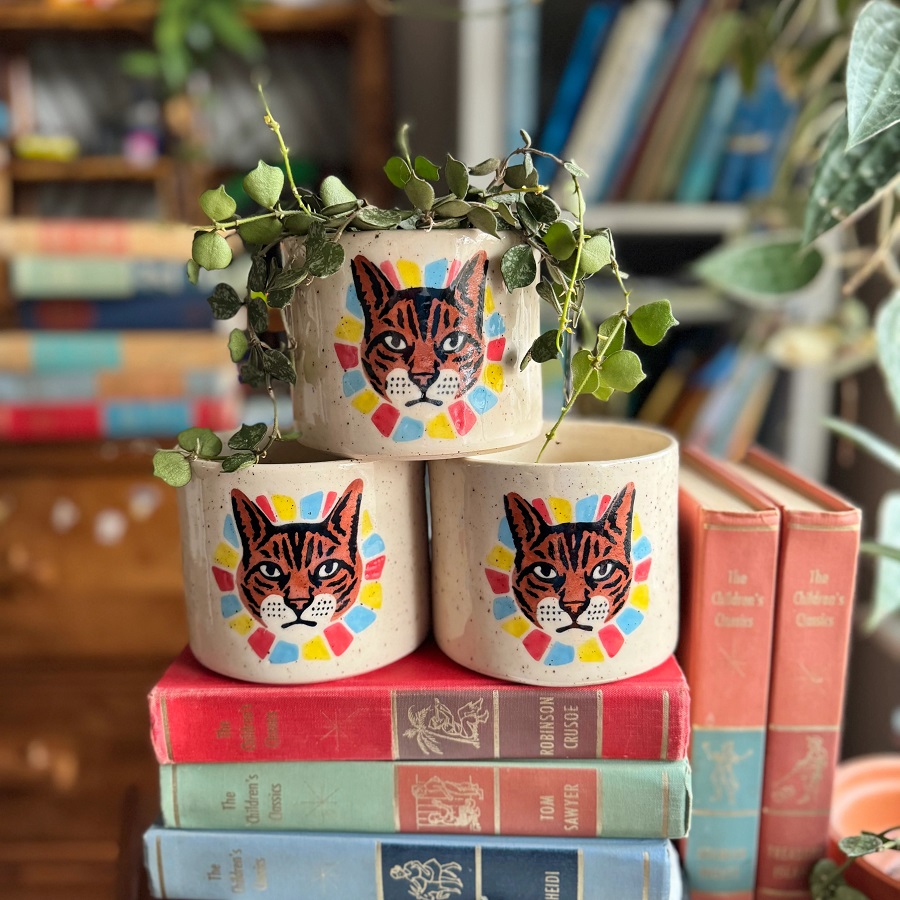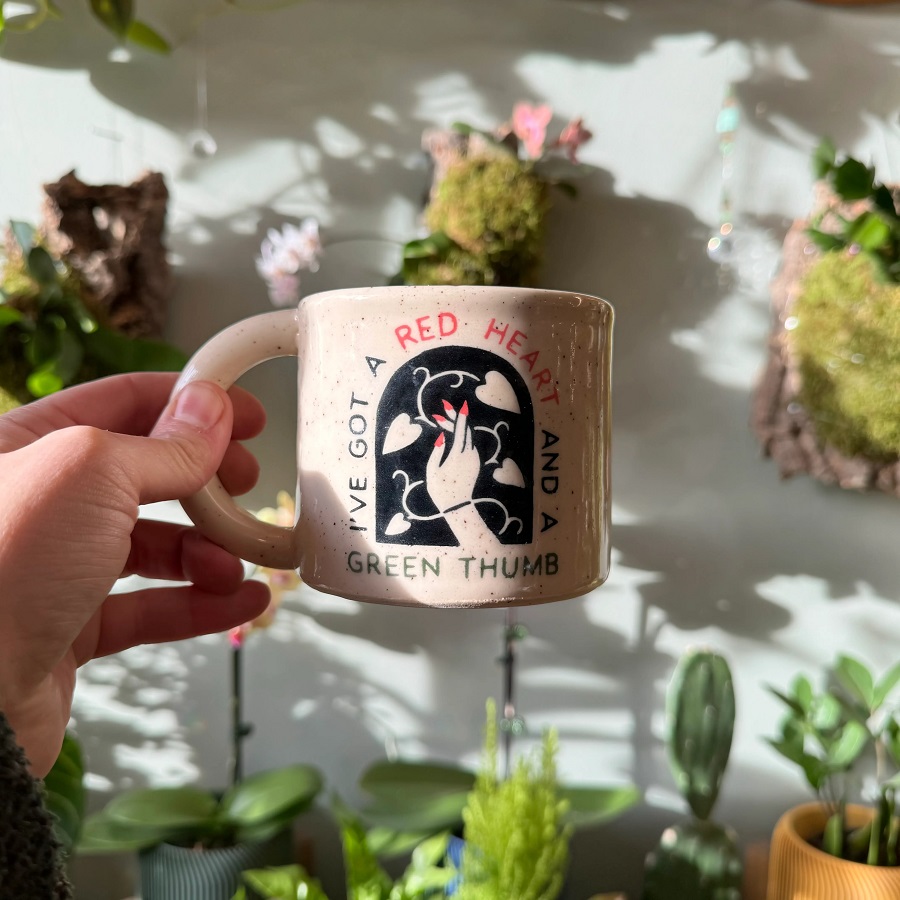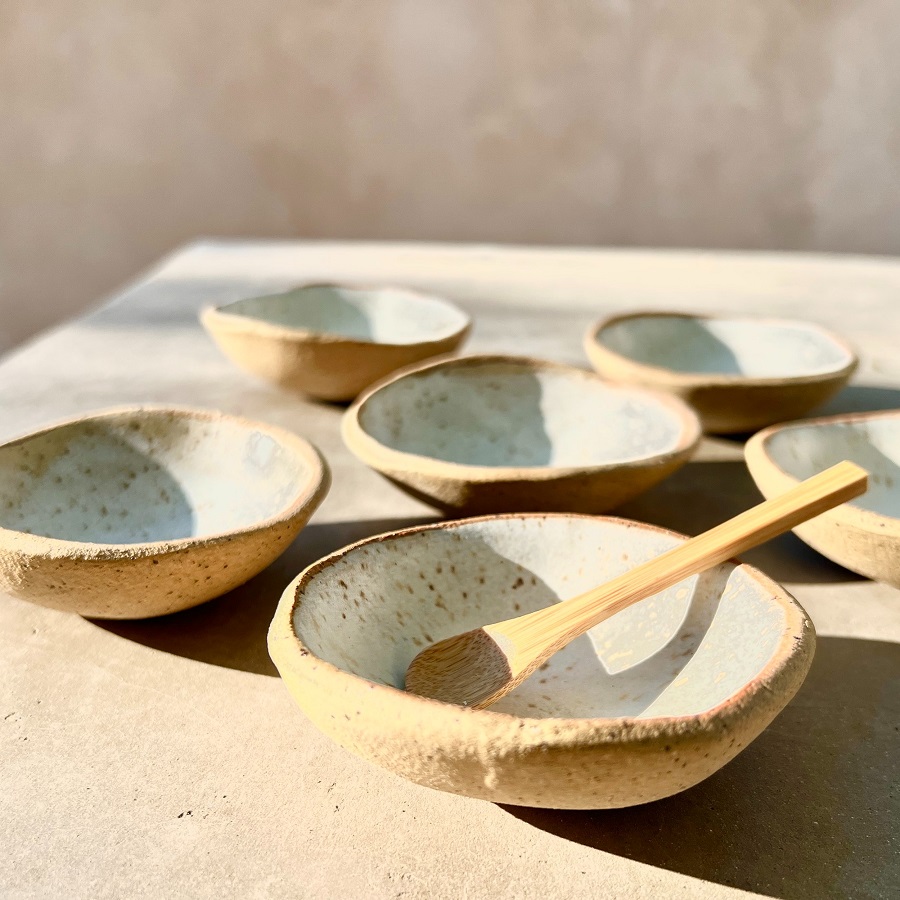The Art of Handmade Ceramics: An Introduction
The world of handmade ceramics offers an escape into a realm where creativity and craftsmanship intertwine. The term ‘handmade ceramics’ refers to objects, often functional or decorative, crafted from clay by skilled artisans. Unlike mass-produced items, each piece of handcrafted pottery bears the personal touch and unique style of its creator.
The making of ceramics is an ancient art form. It connects us to past traditions while allowing for contemporary expression. A single piece of pottery can represent history, culture, and individual artistry. The attention to detail in hand-thrown pots, sculpted figures, or delicately glazed ware speaks of dedication and passion.
Handmade ceramics come in many forms. From mugs and bowls to sculptures and tiles, they enhance our lives with beauty and utility. In this introduction, we’ll explore what sets these items apart from their factory-made counterparts. We’ll delve into the process that goes into crafting each piece, the distinct styles and techniques used, and the artists who keep this art form alive.
By embracing handmade ceramics, we support a tradition of artistry that values quality and human connection over simplicity and speed. Join us as we journey through the exquisite world of handcrafted pottery, appreciating the skill and soul poured into each creation.

The Unique Qualities of Handcrafted Pottery
Handmade ceramics are distinct for many reasons. Each piece is an original, made by an artisan’s hands. No two are just alike. The uniqueness lies in the imperfections – the small fingerprints, glaze drips, or asymmetrical shapes. These traits tell a story and bring character to each object. They also speak to the process behind the creation, hinting at the care and time invested.
The quality of materials used in handcrafted pottery often surpasses that of mass-produced items. Artisans typically choose high-grade clay and apply glazes with precision. This choice leads to durability and a better feel in your hands.
Another hallmark of handmade ceramics is the variety of designs available. From rustic to modern, patterns and colors abound. Artists pour their vision and personal style into every piece. This means buyers get a work of art as much as a functional item.
Lastly, handmade pottery holds emotional value. Owning it connects you to the artisan who made it. You partake in the craft’s history and culture with each use. This aspect of handcrafted pottery enriches the experience beyond the mere practical. It turns daily routines into moments of appreciation for human creativity and labor.
Choosing handcrafted pottery means valuing not just the product, but also the process and the person behind it. Each time you sip from a handmade mug or serve food on a handcrafted plate, you’re acknowledging and cherishing these qualities.
How Handmade Ceramics are Made
Creating handmade ceramics is a layered process filled with care and precision. It begins with selecting the right clay. Artisans choose their clay based on the desired texture, color, and durability of the final piece. High-quality clay is essential, as it forms the foundation of the work.
The next step is shaping. This can be done on a potter’s wheel or by hand. On the wheel, the artisan centers the clay and molds it while the wheel spins. For hand shaping, the ceramicist may use techniques like coiling or slab building to form the piece.
Once shaped, the item must dry. This step is crucial to prevent cracks during firing. The drying takes time and must happen slowly. After it’s dry, the piece undergoes bisque firing. This is a low-temperature firing that makes the pottery hard and porous, ready for glazing.
Glazing is an art in itself. Artists dip, pour, or paint glazes onto the bisque-fired pottery. Carefully, they layer colors and patterns. Each glaze choice affects the final look and feel of the piece.
The final step is the glaze firing. Here, the pottery is heated to high temperatures. The glaze melts, forming a glass-like surface. This process also strengthens the pottery, making it durable and functional.
This simplified snapshot of the process shows how much artistry goes into handmade ceramics. From the first touch of clay to the last firing, each step requires skill and attention. It’s this human touch that gives handmade ceramics their unique charm.

Styles and Techniques in Ceramic Craftsmanship
Ceramic craftsmanship is both an art and a science, embodying a rich diversity of styles and techniques. These methods have evolved over centuries, reflecting the cultural heritage and creativity of artisans around the world.
Throwing on the Potter’s Wheel
One of the most recognized techniques in handmade ceramics is wheel throwing. Here, the artist shapes clay on a rotating wheel. This method requires great skill and control. Artisans can create symmetrical and rounded forms like vases, bowls, and mugs.
Hand-Building Techniques
Hand-building is another fundamental method. It involves shaping clay by hand without using a potter’s wheel. Common hand-building techniques include pinching, coiling, and slab construction. Each offers a distinct texture and shape to the final product.
Slip Casting
Slip casting is used for more intricate designs. A liquid clay mixture, or slip, is poured into molds. Once it sets, the clay takes the mold’s shape. This technique allows for consistent reproductions and detailed forms.
Glazing and Decoration
Glazing adds color and finish to ceramics. Artisans apply glazes by dipping, brushing, or spraying. They may also use techniques like sgraffito or inlay to decorate surfaces before glazing. These methods impart unique patterns and depth.
Firing in Kilns
Firing in kilns is a critical step. It transforms soft clay into durable ceramic. High-temperature firings bond the glaze to the piece, while lower temperatures may be used for bisque firing. Artisans choose firing methods based on the desired effect and clay type.
Innovative and Experimental Techniques
Modern ceramicists also embrace innovation. They may incorporate mixed media or experiment with alternative firing techniques. Raku, salt firing, and wood ash glazes offer distinctive results not found in traditional methods.
Each style and technique brings its own charm to handmade ceramics. They showcase the artist’s prowess and enrich the craft with a spectrum of textures, forms, and finishes. As patrons of this art, we celebrate the variety and craftsmanship imbued in every piece.

The Importance of Supporting Local Ceramic Artists
Supporting local ceramic artists is more than just buying a piece of pottery. It is a commitment to preserving a craft, contributing to the local economy, and fostering cultural identity. Here are the key reasons why it is crucial to support these talented individuals:
- Preservation of Craftsmanship: When you buy from local artists, you help keep the age-old tradition of ceramics alive. These artists pass down techniques from generations, keeping the culture and art form vibrant.
- Economic Support: Purchasing from local ceramicists puts money directly into your community. This support can make a big difference in the livelihood of artists. It also promotes the growth of small businesses.
- Unique Artistic Expression: Local artists bring their unique perspectives to their work. This results in diverse collections of handmade ceramics that you won’t find in mainstream stores.
- Personal Connection: Buying locally allows you to meet the makers. You learn their stories and the inspiration behind their work. This personal touch adds value to every piece you purchase.
- Eco-Friendly Choice: Shorter travel distances for locally-sourced ceramics mean a lower carbon footprint. This choice is better for the environment compared to importing goods.
- Quality Over Quantity: Local ceramic artists tend to prioritize quality over mass production. You get a well-crafted product that can last for years and even become a family heirloom.
By choosing to support these artisans, you are not only getting a beautiful, handcrafted item. You are also making a choice that benefits your community and the planet. Embrace the beauty of handmade ceramics and the local hands that shape them.
Decorating with Handmade Ceramics: Tips and Ideas
When you bring handmade ceramics into your home, they add a touch of uniqueness. They can be more than just functional; they can also be a key part of your decor. Here are some tips and ideas for incorporating these beautiful pieces into your living space:
- Mix and Match for Eclectic Charm: Don’t be afraid to combine different styles of pottery. A mix can add depth and interest to any room.
- Create a Focal Point: Use a large, striking piece as the centerpiece of a table or mantle. Let it catch the eye and start conversations.
- Use Function as Display: Arrange mugs, bowls, or plates on open shelves. This way, they’re handy and also serve as decoration.
- Add Greenery: Handcrafted vases are perfect for fresh flowers or indoor plants. They can bring life and color to any corner.
- Set the Mood with Lighting: Place tealights or candles in hand-thrown holders or lanterns for a warm ambiance.
- Seasonal Decor: Switch out pieces with the seasons. Use lighter colors for spring and deeper tones for autumn.
- Texture Play: Blend smooth glossy finishes with rough, earthy textures. This contrast can be visually striking.
- Consider the Palette: Choose ceramics that complement your room’s color scheme. They should enhance, not clash with, your current palette.
- Gifts with Character: Give handmade ceramics as gifts. They’re personal and can fit any decor style.
- Art Installations: Mount ceramic plates or tiles on walls as art pieces. They can add an artisanal touch to your space.
Decorating with handmade ceramics is all about expressing your style. With these pieces, you can create a home that feels both personal and welcoming.
The Sustainability of Handmade Ceramics
The sustainability of handmade ceramics plays a key role in their appeal. These pieces are not just art; they are part of an eco-friendly lifestyle. Here’s why.
- Longevity and Durability: Handmade ceramics are built to last. Artisans use high-quality materials that can stand the test of time, often outliving their mass-produced counterparts.
- Local Resources: Many ceramic artists utilize local clays and glazes, reducing the need for long-distance shipping. This use of nearby resources cuts down on fuel consumption and carbon emissions.
- Handmade Means Less Waste: The process of making ceramics by hand is precise. Artists create only what is needed, which leads to minimal waste. This contrasts with factory production with its excess and discard.
- Repair Over Replace: Handcrafted pottery is often repairable. Chips or cracks can sometimes be fixed by a skilled artist. This invites a culture of repair rather than throw away.
- Non-Toxic Materials: Handmade ceramics generally use natural materials that are less harmful to the environment. The glazes and slips are often non-toxic and lead-free, making them safer for use.
- Energy Efficiency: Some potters practice energy-conscious firing methods. They may use alternative energies or design kilns that require less fuel. These methods show a commitment to reducing environmental impact.
- Biodegradable: If a ceramic piece does reach the end of its life, it is largely biodegradable. Since clay is a natural material, it will break down over time.
In conclusion, handmade ceramics favor the environment. From their creation to their daily use, they support sustainable practices. As consumers, choosing handmade pottery not only enriches our homes but also our planet.
Where to Find and Purchase Quality Handmade Ceramics
Discovering quality handmade ceramics involves knowing where to look. One of the best ways to find them is to visit local art fairs and markets. Artisans often display their work, offering a range of unique pieces. You can see the items up close and learn about the making process directly from the creators.
Another great option is visiting pottery studios or workshops in your area. These spaces sometimes sell work by various artists. This lets you explore different styles and techniques in one location. Studios also might offer pottery classes where you can create your own piece.
Boutique stores that specialize in home decor are also known for carrying handmade ceramics. They curate collections from different artists, giving you access to a breadth of designs. Be sure to look for stores that emphasize local or artisanal products.
Online marketplaces are another popular spot. Websites dedicated to handmade goods can connect you with ceramic artists from around the world. Be aware of shipping fees and the potential for breakage during delivery.
Lastly, don’t overlook social media platforms and blogs. Artists and makers often share their newest creations and may sell directly through these channels. Following your favorite artists can alert you to sales and new availability.
When purchasing handmade ceramics, remember to check for quality. Look at the finish, the weight, and how the piece feels in your hands. Support artists who value eco-friendly practices and craftsmanship. Each purchase will bring you joy and contribute to the sustainability of the craft.